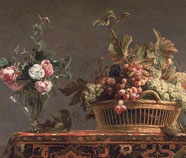Realism

Realism refers to a mid-19th century cultural movement with its roots in France, where it was a very popular art form around the mid to late 1800s. It came about with the introduction of photography - a new visual source that created a desire for people to produce things that look objectively real. Realism was heavily against romanticism, a genre dominating French literature and artwork in the late 18th and early 19th century. Undistorted by personal bias, Realism believed in the ideology of objective reality and revolted against exaggerated emotionalism.
Realism in France appears after the 1848 Revolution. In France it expresses a taste for democracy. At the same time in England artists - Realists came before the public with the reaction against the Victorian materialism and the conventions of the Royal Academy in London.
In spite of its social inclinations Realism produces no new style in architecture and few valuable sculptures.It was the time of introduction of new technologies in constructions. The revolutionary modular construction and largest spans in structural skeleton that could then be mass-produced - used on exhibition halls, railway stations; the use of cast iron as building material and invention of twisted-wire cable that extended main spans of bridges in Europe and United States. Less positive attitude toward technological progress can be seen in the first attempts to incorporate structural iron into architecture proper.



